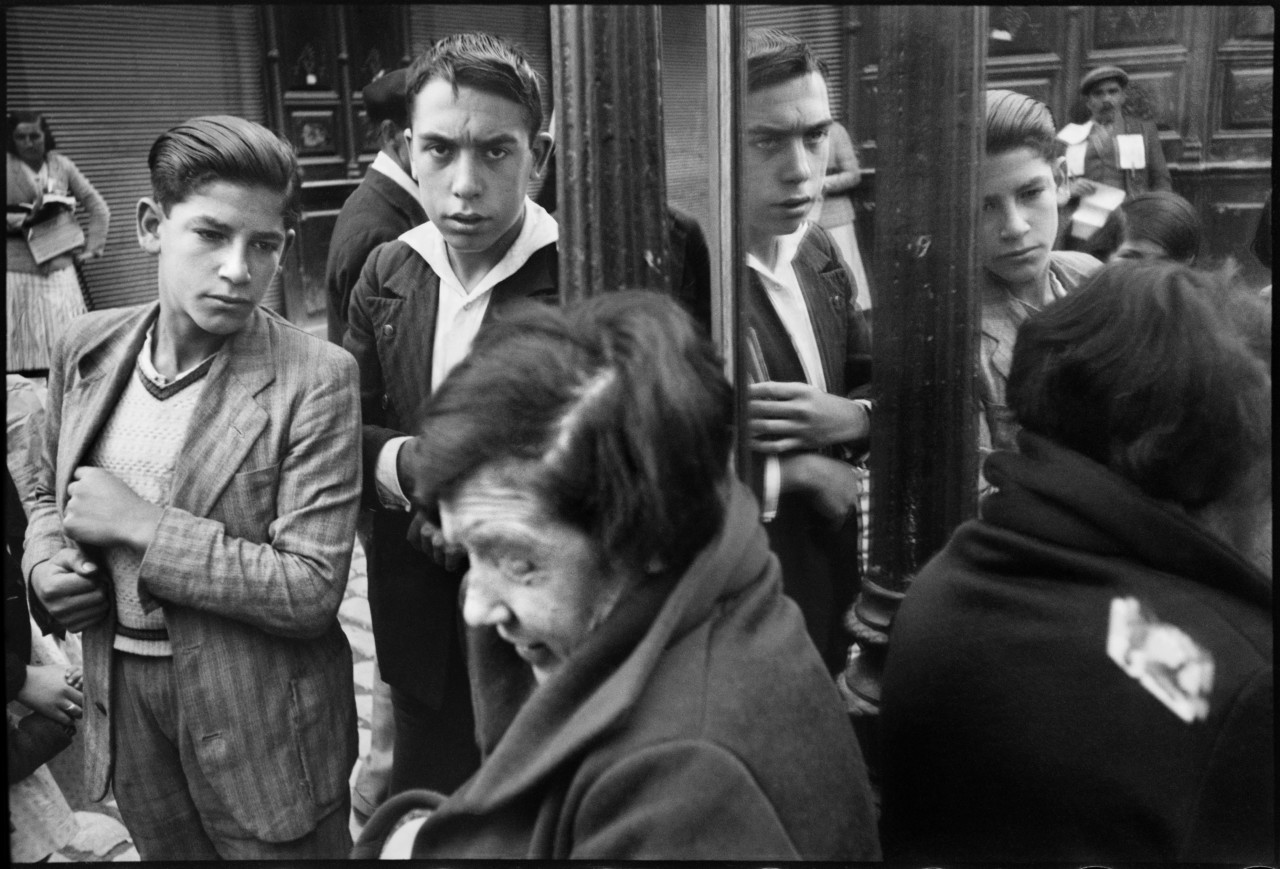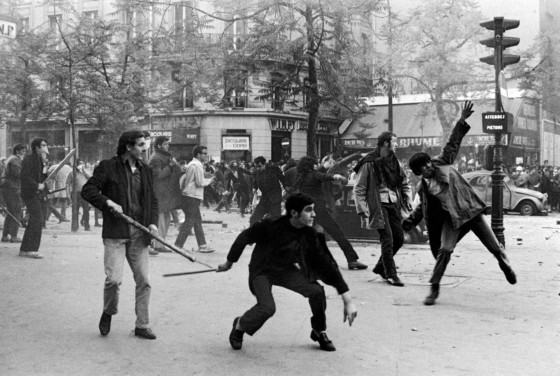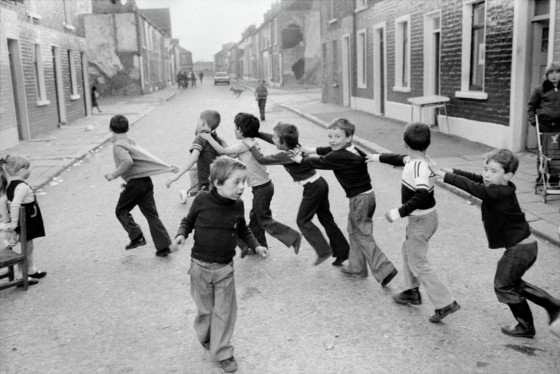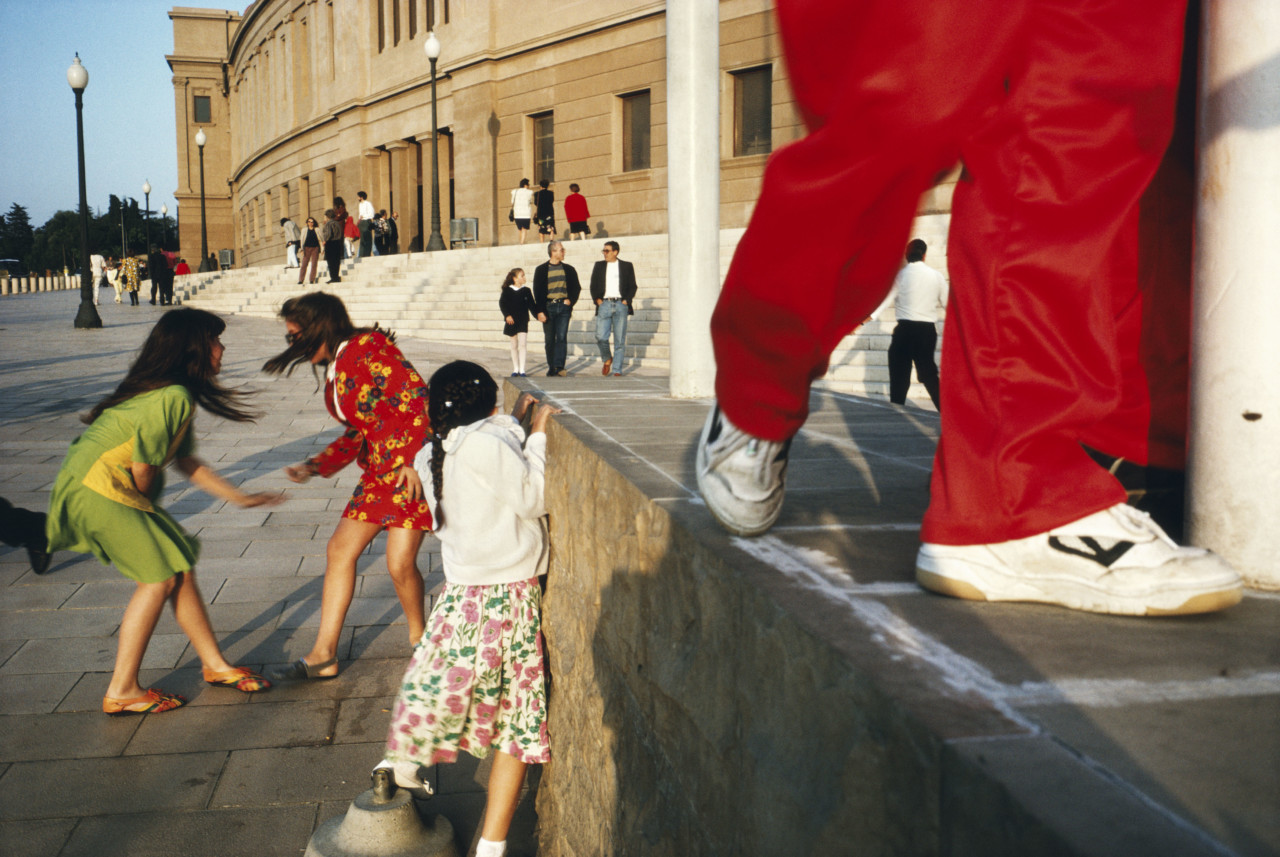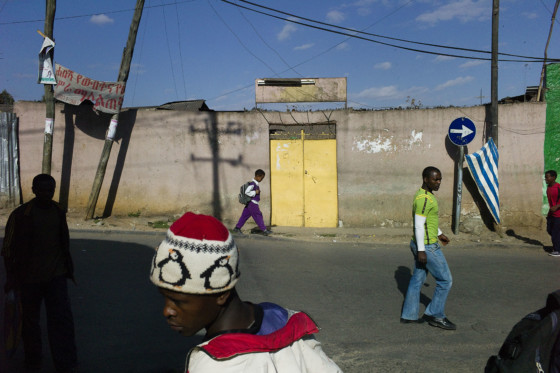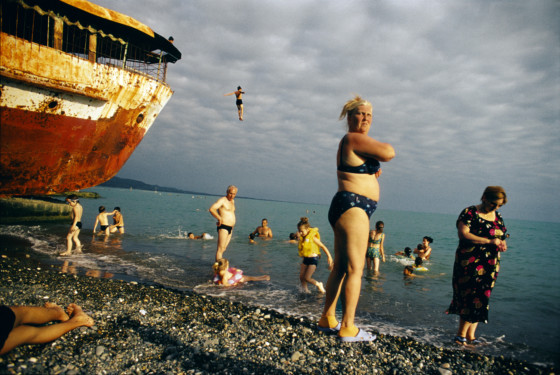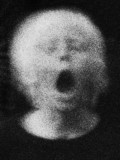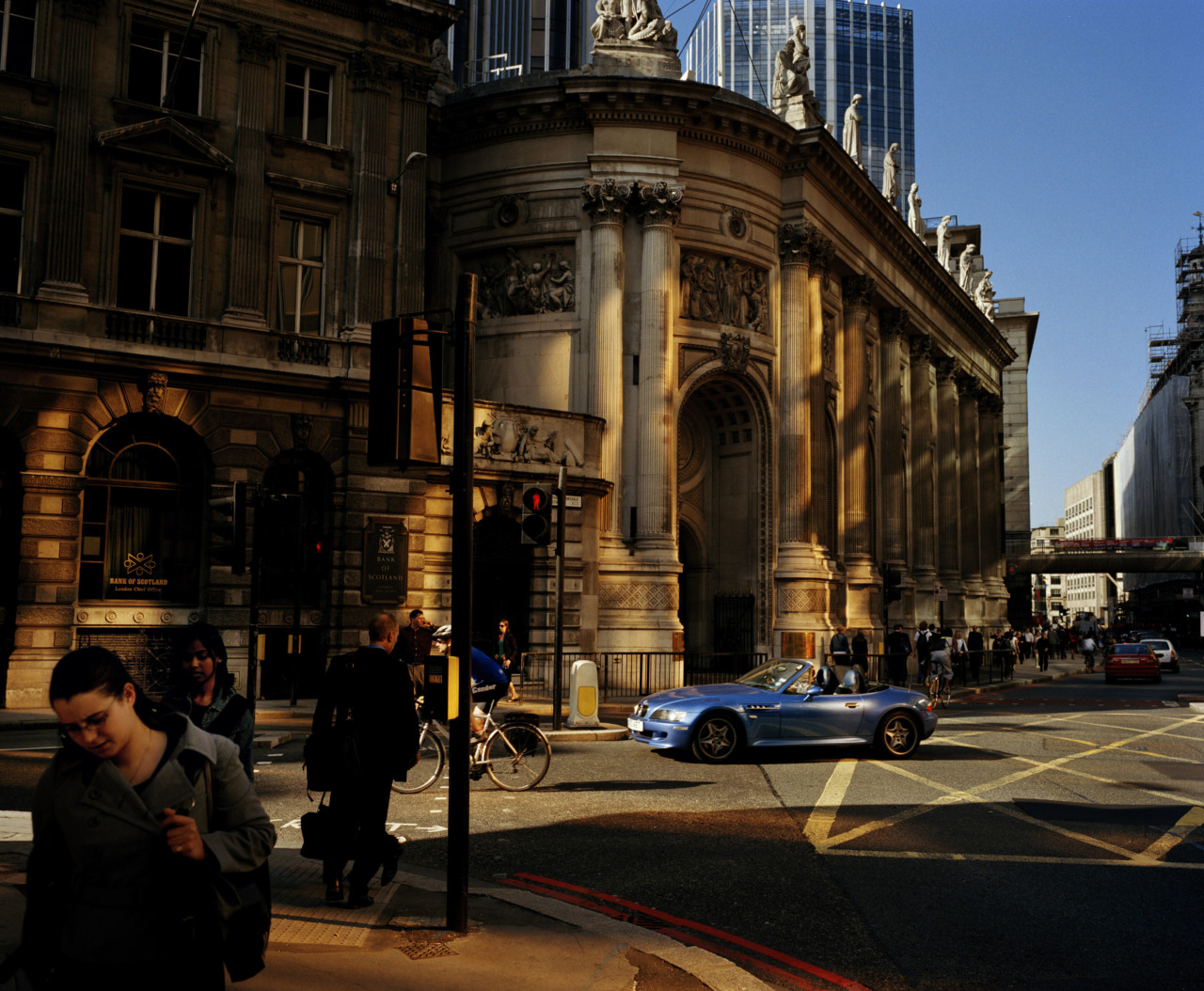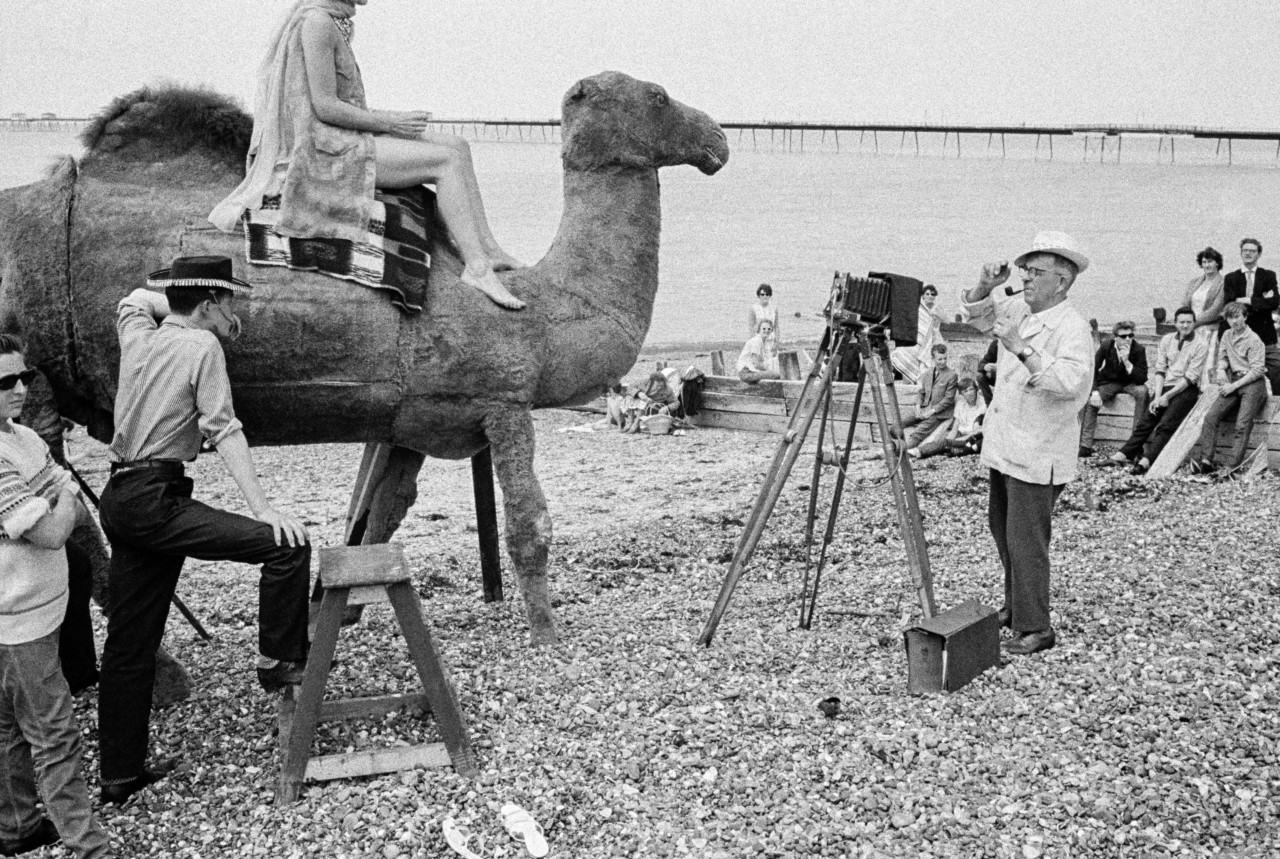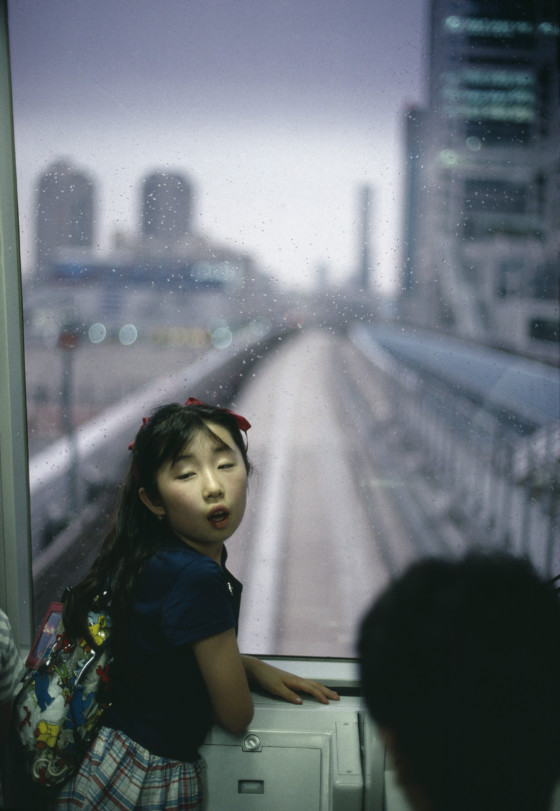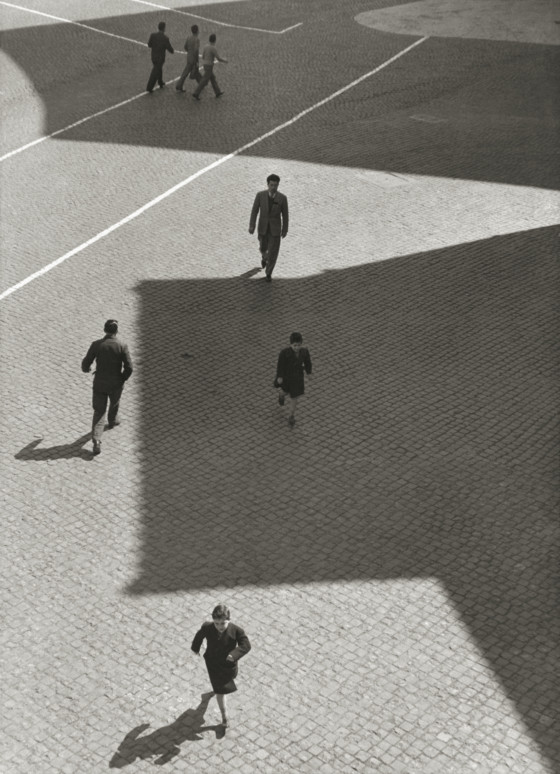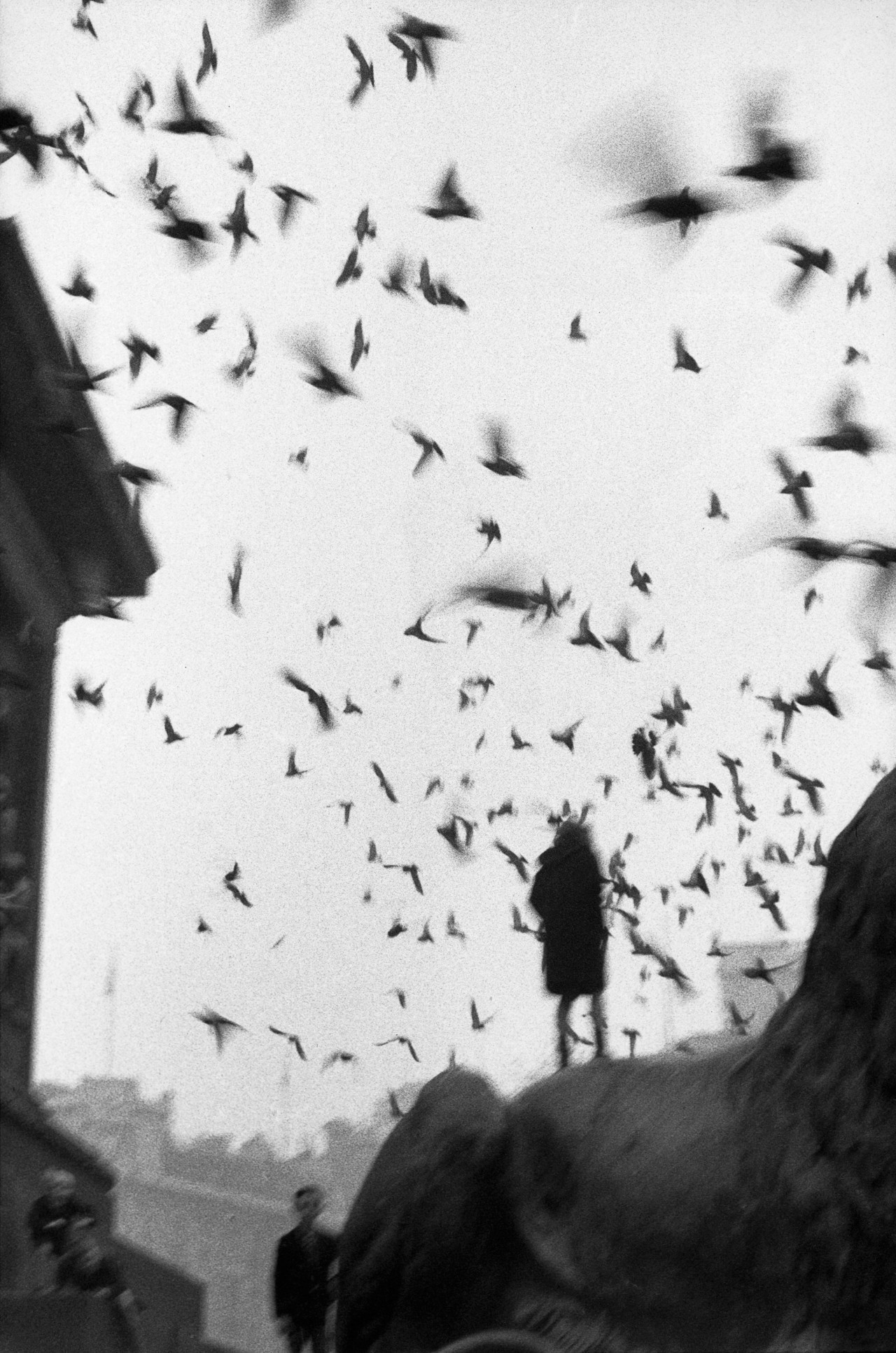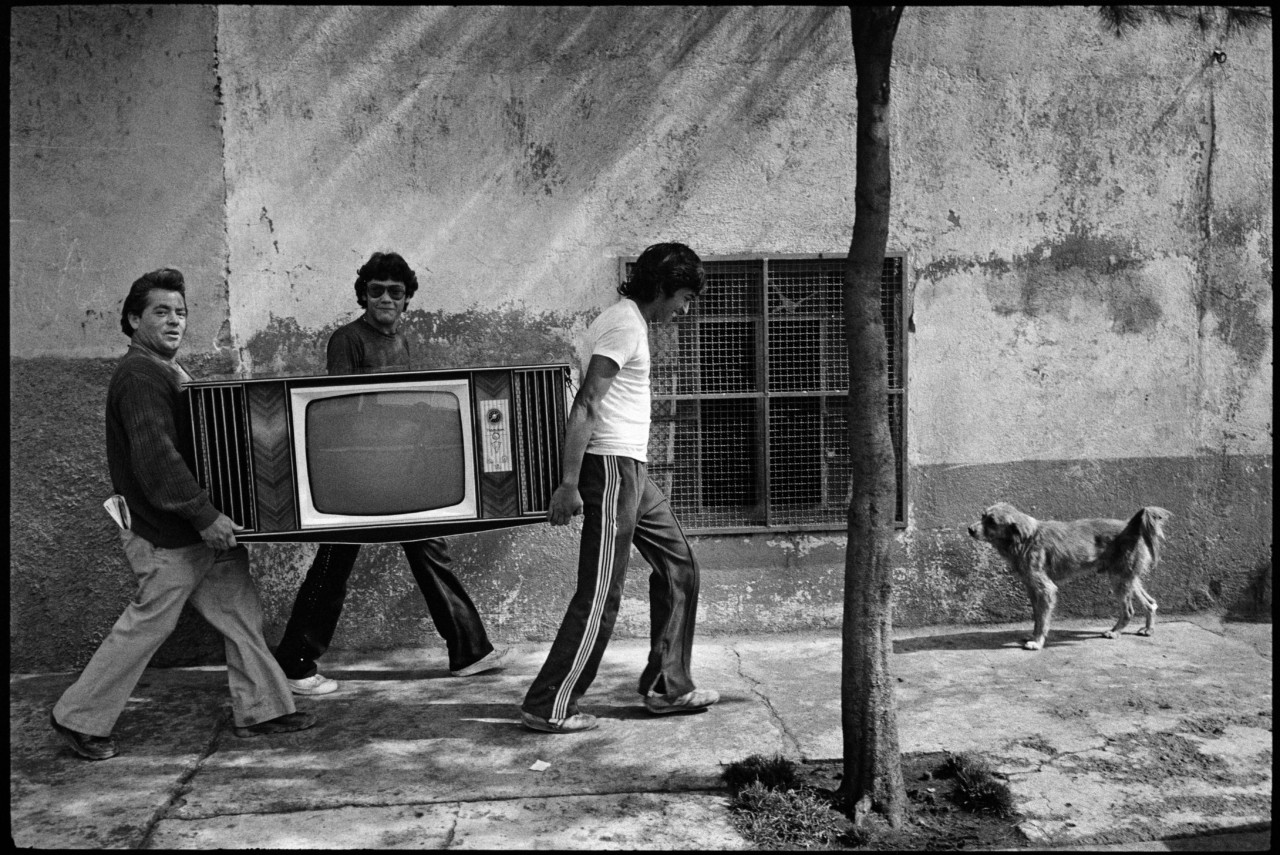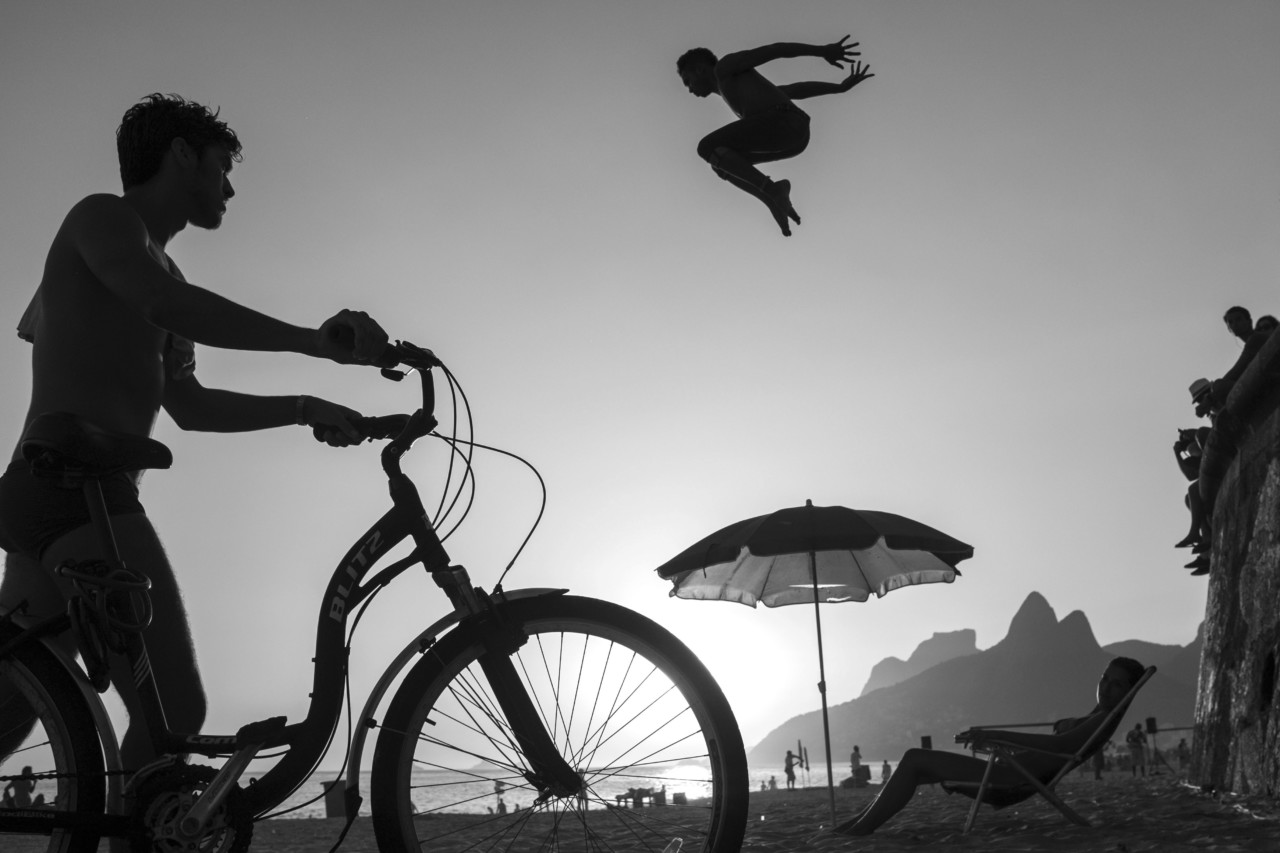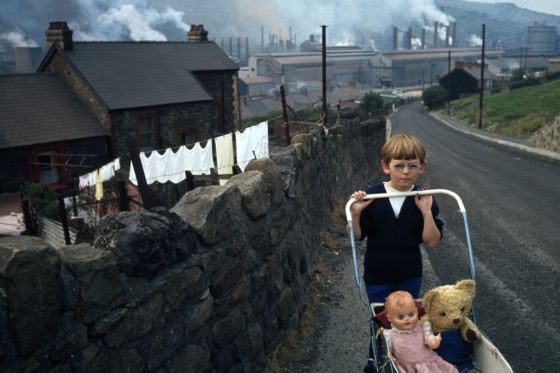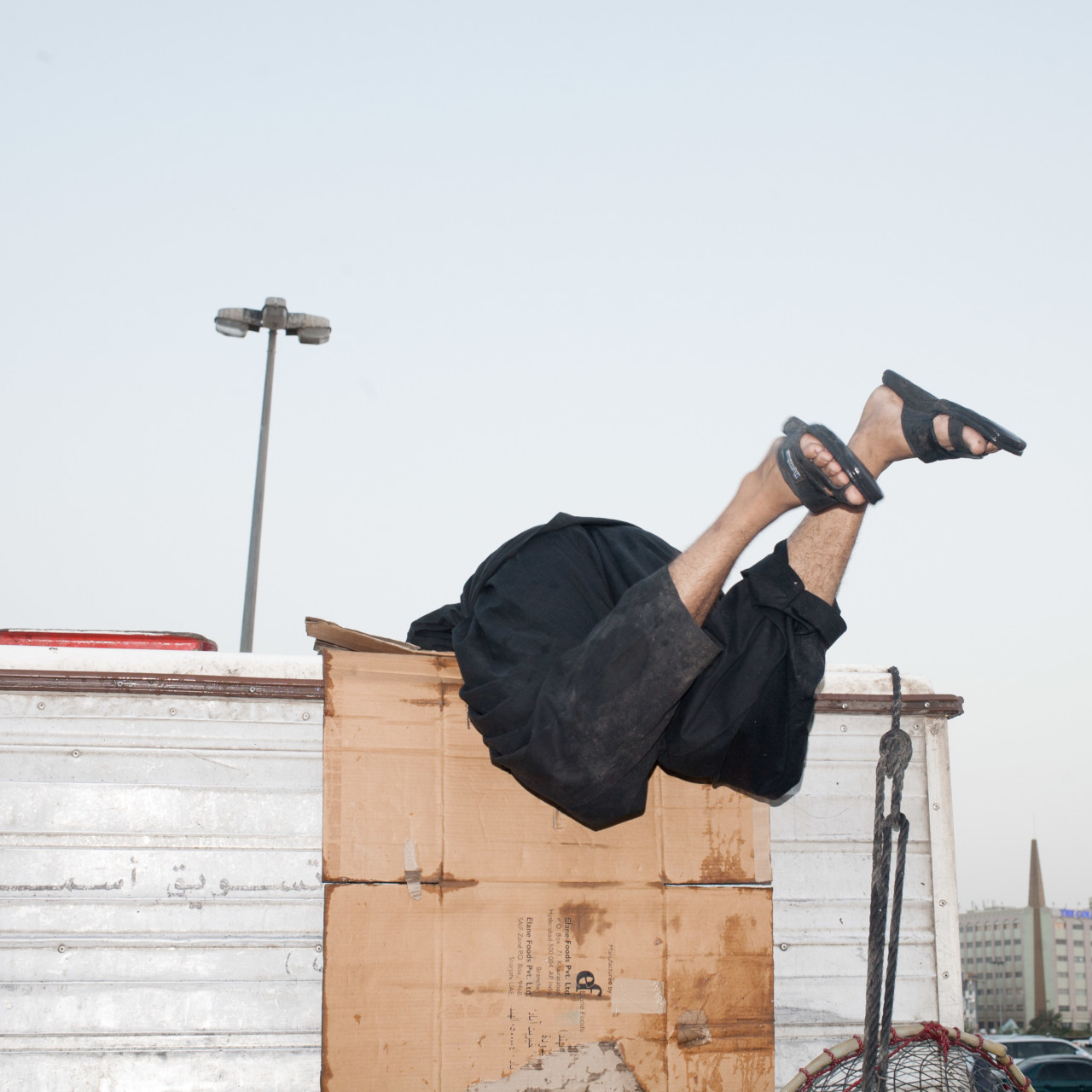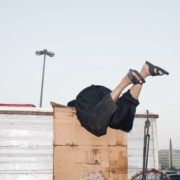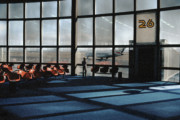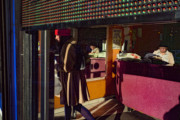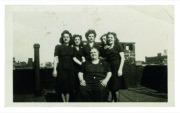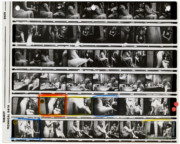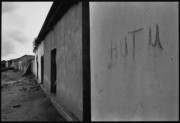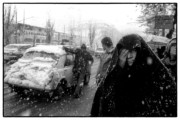Magnum Streetwise
A new book examines Magnum's engagement with street photography, from 1947 to today
A new book, Magnum Streetwise, explores the history of Magnum Photos in the realm of street photography from the early work of the collective’s founder-memebers through to classic works of the genre, and brand new projects. Here, we share an extract from the book’s introduction, written by it’s editor Stephen McLaren. Magnum Streetwise is available, here.
Magnum Photos will celebrate the launch of Magnum Streetwise at the Magnum Print Room, London, on October 10th from 6:30pm – 9pm. Please join us by 7:15pm for a short presentation of the book by editor Stephen McLaren. More information can be found here.
Magnum’s first online education program – The Art of Street Photography – is available now, and sees seven Magnum photographers tacking the challenges – and exploring the rewards of – the genre. You can learn more, and buy the course here.
Street photography is often practised by Magnum’s photographers simply for the sheer exhilaration of it. Many of the agency’s members have revelled in the street’s capacity for throwing up micro-dramas that, when seen with the right eye, can resolve themselves into captivating and mysterious photographs whose narrative potential would excite a Tolstoy or a Proust. Street photography revels in the incongruous, the implausible, the inconsistent and the ineffable. It celebrates ambiguity, hinting at parallel realities that we can only occasionally tune into, and then only for a fraction of a second. It is more of a tradition than a genre, a suite of improvisational tools to be used when the moment demands it, like a jazz musician searching for a riff. In the best street photography, we are opened up to a range of emotions, sometimes outrageous wit from the likes of Elliott Erwitt, but also compassion, intrigue and occasionally awe. Unsurprisingly, given that Magnum is a collective of photojournalists, some of the best street photography taken by its members has arisen from news-driven assignments. In 1968, the Frenchman Bruno Barbey spent a whole summer documenting the student insurrection in Paris, bringing back many surreal images from the impromptu barricades that divided the city. Likewise, the Englishman Chris Steele-Perkins spent several months in Belfast, Northern Ireland, in the early days of the Troubles; but instead of following the gunmen around, he trained his camera on the children who played happily in the rubblestrewn streets. While these images were published in newspapers and magazines, they were also accomplished examples of street photography that transcended the immediacy of their reportage.
Everyone who enjoys the capricious and intoxicating atmosphere of life in the big city likes to consider themselves streetwise. No one wants to be that out-of-towner who gets pickpocketed, is dropped off at the wrong end of the street, or ends up paying more for a taxi or espresso than the next person. Everyone knows there is wisdom in the streets, wisdom in crowds. To be streetwise is to be savvy in the urban jungle, to know where you can safely go about your business, whom you should keep an eye out for, and how to extricate yourself from a tricky situation. But for street photographers, true street wisdom is much more than just being able to photograph safely in an urban setting; it belongs to those who have an intuitive sense of their immediate environment and the people in it. For the truly committed street photographer, acting suspiciously is an occupational hazard. It rewards gamblers and those with sharp elbows.
All the Magnum photographers featured in this collection could definitely be described as streetwise. Each is, or was, at home working in the city, weaving through the urban flux, sniffing out those effervescent moments when a photograph might present itself. Like taxi drivers, street photographers know how cities work, how people rub along with one another, where the juicy action is. Knowing when the autumnal sun will set on Washington Square Park is being streetwise, as is recalling which streets in Soho have the busiest crowds on a Friday night.
In 2010, in London’s financial district, I bumped into the Australian Magnum photographer Trent Parke. It was only 9 a.m., but for Parke, who had been out shooting since the crack of dawn, in his flip-flops, the good light had already gone for the day. As Parke was able to show me, if you’re up and about in London ultraearly, you notice how the commuters’ faces glow red with light reflecting off the city’s famous red buses. That’s streetwise.
"Life as it unfolds in front of the camera is full of so much complexity, wonder and surprise that I find it unnecessary to create new realities"
- David Hurn
A streetwise photographer, like the ones you are about to meet, is also adept at sensing that moment when reality quivers with photographic possibility – when small changes in the atmospherics call for focused attention, quick feet and hair-trigger camera action. A flow of commuters coming out of a subway creates an urban zephyr, animating a group of friends; a shout from a construction worker causes passers-by to look skyward; a shoal of tourists feels the first drops of rain and instinctively opens umbrellas. Click. As Henri Cartier-Bresson observed: ‘Thinking should be done beforehand and afterwards – never while actually taking a photograph. Success depends on the extent of one’s general culture, on one’s set of values, one’s clarity of mind and vivacity.’
"I can only materialize that world of phantoms when I see something that resonates within me"
- Sergio Larrain
Streetwise photographers are instinctive readers of body language. They know how commuters keep track of their personal space on the Underground, they can sense when someone is about to yawn while waiting to cross the road, and they revel in the rituals of a group of friends sitting together on a night out. To be able to approach such a scene, unobtrusively get within camera range and take one or two frames, and then depart leaving the subjects untroubled and the location untouched is akin to being a cat burglar. To pull this off is to be a master of distraction, often ready with a winning smile to disarm unwitting subjects, or employing distractions when the invisibility cloak isn’t quite working.
Of course, you don’t have to be a photographer to have this observational toolkit. But when the default status of today’s city dweller is distraction-by-screen or a head-down charge for the exit, then it is often left to the street photographer, who stops, looks and looks again, to remind us what it’s like to experience the urban flux moment-by-moment.
What I’m describing is redolent of the French flâneur, the roving city walker who has the time to observe the small, theatrical moments that spontaneously occur outside brasseries, in street markets and next to town halls. However, a truly streetwise photographer is always looking inwards for inspiration. It is when an event in their field of view chimes strongly with their psychological state that the urge to select one street moment over another becomes a means of unlocking the subconscious. As the Chilean Magnum photographer Sergio Larraín observed: ‘When I turn my gaze outward, camera in hand, I’m actually looking inward for pictures; I can only materialize that world of phantoms when I see something that resonates within me.’
At its core, street photography is a very solitary, poetic activity, one that requires huge reserves of patience and resilience. At annual general meetings, Magnum members share the previous year’s endeavours with their colleagues, seeking out critique and reassurance. But personal projects are also highly valued among the fraternity. Although some of the bodies of work in this collection are the result of paid assignments, much of it is of the personal kind, the result of self-directed explorations and risky journeys into the unknown. David Hurn is one of several Magnum photographers who frame their daily camera excursions in terms of a lust for life and all that it affords: ‘Life as it unfolds in front of the camera is full of so much complexity, wonder and surprise that I find it unnecessary to create new realities. There is more pleasure, for me, in things as-they-are.’


